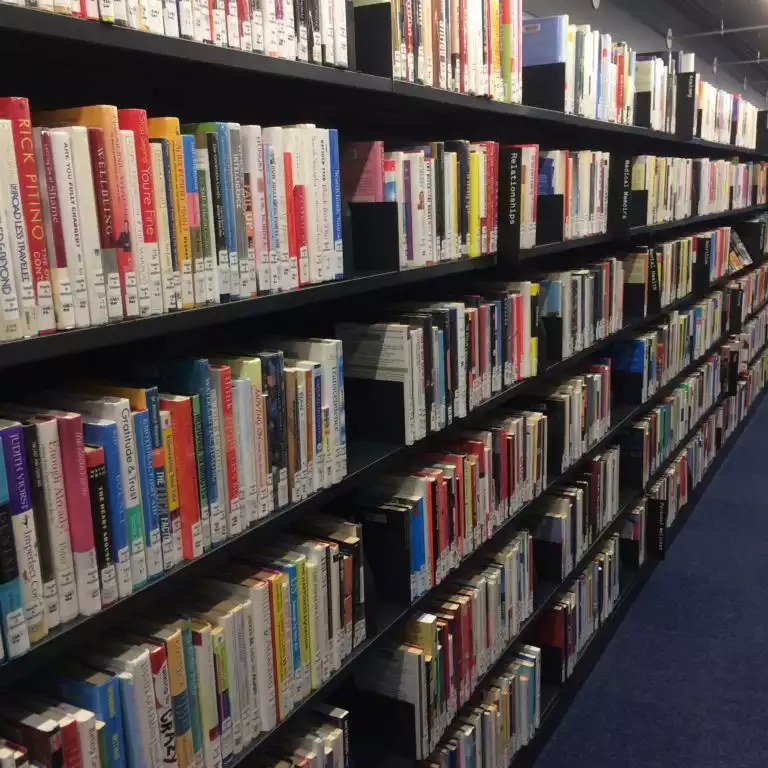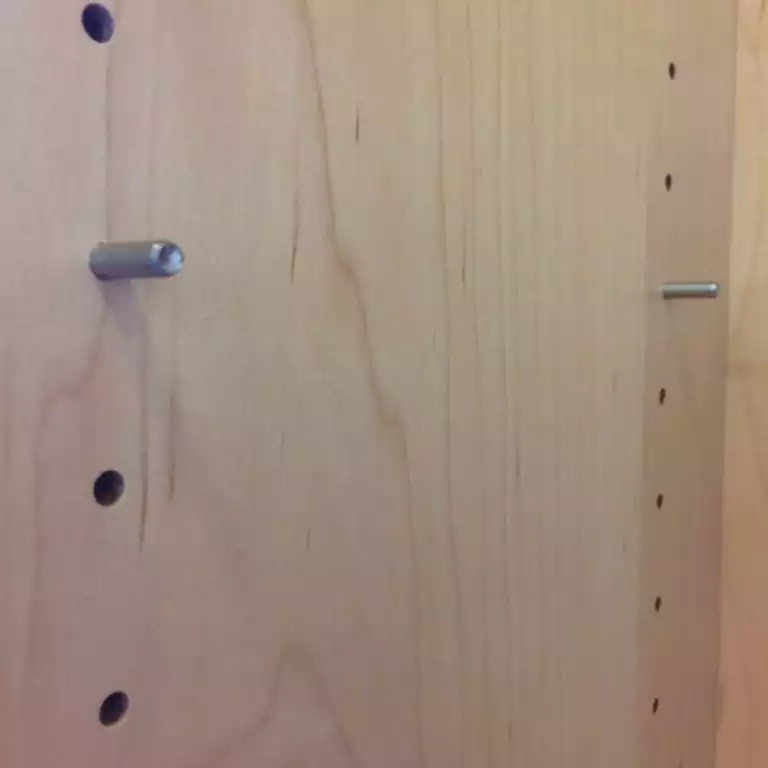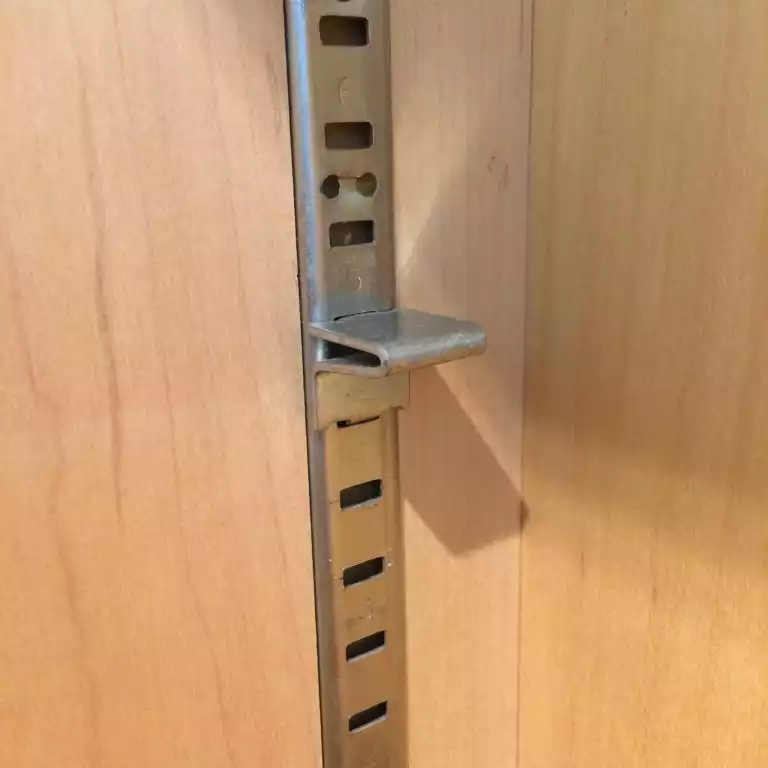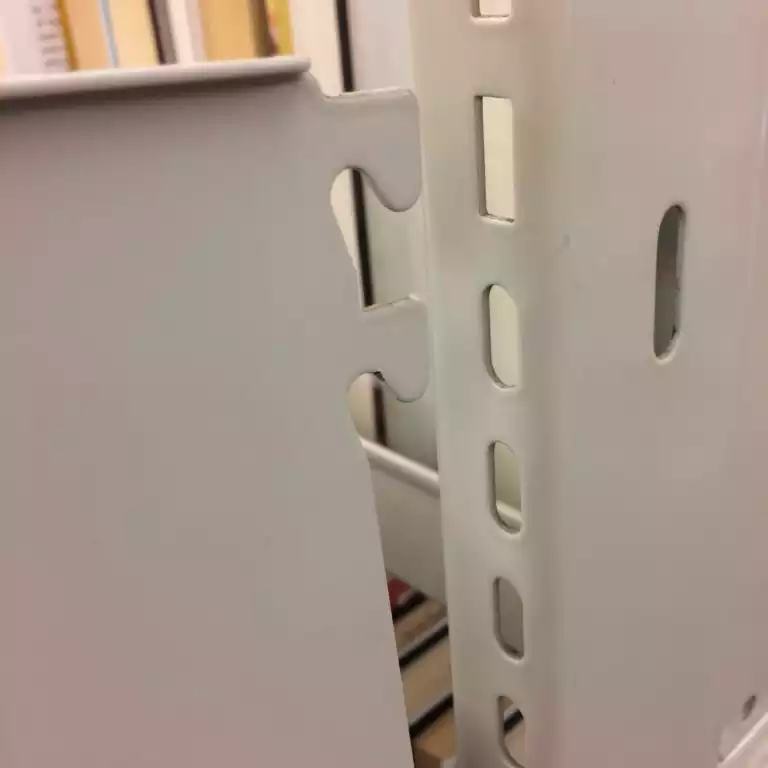
We have over 4,200 shelves for books, DVDs, CDs, and audiobooks at the library. Shelving is so ubiquitous throughout the building it’s easy to forget that at some point all of the units had to be installed and assembled in order to do their job of housing our collections. The shelves on almost all of the units are adjustable which gives us some flexibility in where and how we keep different collections with larger or smaller items. For example, we give the big coffee table books in our Arts neighborhood a bit more vertical room than we do for the Business and Career books.
However, this freedom to move shelves brings with it a problem: how do you make sure all of the shelves are level? This may seem like a minor problem but when you have to adjust hundreds of individual shelves for a collection the problem multiplies. We have three types of shelving units and each one adjusts differently. Below are my least favorite to easiest to adjust, starting with the most difficult.

The picture above shows the left wall of a wooden shelving unit with the shelf removed. These are great looking shelves but the four metal pegs that support each shelf can be difficult to remove and insert a new hole. Also the holes aren’t numbered so the possibility of putting a peg in a wrong hole is fairly high. Moving a bunch of shelves requires a lot of counting and some trial-and-error.

Here we have another way of adjusting our wooden shelves: metal brackets in numbered tracks on the walls. The numbers on each of the four tracks run from one to six and then repeat. To make sure each shelf is level you just make sure each bracket on each track is on the same number. The drawbacks: the etched numbers are faint and small and it is surprisingly easy to dislodge brackets. This can make placing shelves frustrating.

Finally, my favorite shelves to work with: the standard steel library bookcase. These may not be quite as aesthetically pleasing as wooden shelves but they are the workhorses of the library world. The cantilevered shelves have a bracket on each side. Notches on these end-brackets fit into each side of the vertical frame. If you look closely at the picture you can see the holes in the frame have different shapes: ovals and rectangles. These are in a repeating pattern (in the example above it runs four ovals then two rectangles) and are the same on either side of the frame. Moving the shelves for these units require only a bit of counting ovals and rectangles. It’s pretty easy to install a full run of shelves without any errors.
The next time you are in the library please take a moment to enjoy the long parallel lines of shelves that can be found on all of our floors. And for those who cannot read enough about bookcases Harvard Design Magazine features this well-illustrated essay.
I hope to see you browsing our stacks soon.
